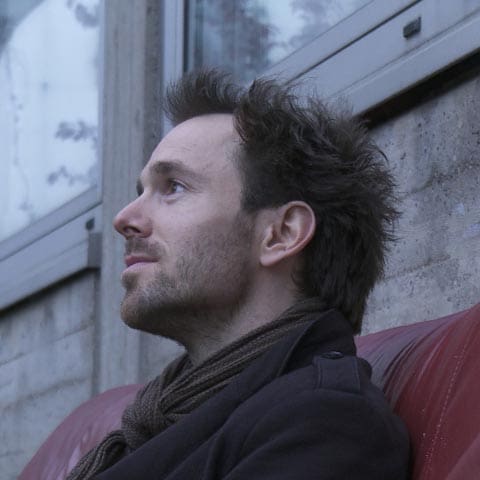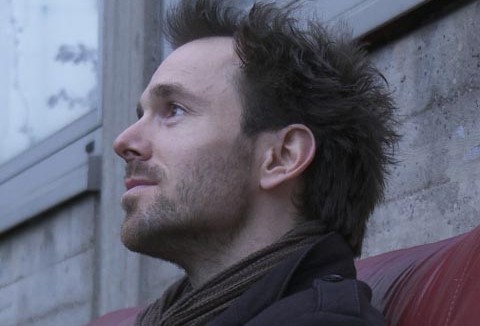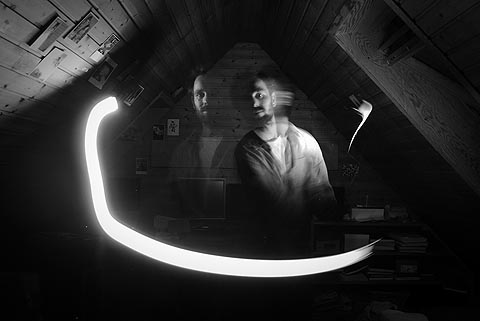

CBTV STUDENT FEST: “Snail Trail” by Philipp Artus
Today is bittersweet because we are presenting the final film in our 2012 Cartoon Brew Student Animation Festival. But we are delighted that this film is an extraordinarily unique achievement in computer animation.
Snail Trail comes to us from Germany, where it was made by Philipp Artus at the Academy of Media Arts Cologne. The film draws an ingenious link between two disparate things: the spiral of a snail shell and the concept of exponential acceleration (don’t worry, we had to look up the latter one too).
Mere description fails to do this film justice though. Snail Trail is an intensely visceral experience. Excitement and surprise abound in every frame, even as the film celebrates the mathematical order of the universe. The snail’s dynamic evolution in mobililty is eloquently expressed through a luminescent line that curls and stretches across the screen. Artus achieved the fading trail of images by projecting his computer animation with lasers onto a phosphorescent material.
The totality of Artus’s vision is startlingly beautiful. Snail Trail, quite simply, uses computer animation in ways that we have not seen before, and the results are astounding.
Continue reading for comments from the filmmaker Philipp Artus:

THE IDEA
In the animation a snail invents the wheel and goes through a cultural evolution to finally get back to its origin. The basic idea of the work is inspired by processes of exponential acceleration, which can be observed at different levels. Thus, the evolution of life proceeds at an extremely slow pace for more than 3 billion years, until it suddenly seems to explode in the Cambrian period. The tools of human beings progress relatively little during the Stone Age until there comes a rapid cultural development during the Holocene. Nowadays, a similar acceleration process is generated by the exchange of information through the Internet. From this perspective, the exponential spiral on a snail shell may almost appear like a miraculous wink of nature.
TOOLBOX
I rigged and animated the character in 3ds Max. Then I projected the animation with a laser on a phosphorescent material and recorded it frame by frame with Dragon Stop Motion. Finally, I did the post production with After Effects. It was a very time consuming process, but I like the unique style that it creates. It looks somehow digital but has also the feeling of a hand-drawn animation.
CHALLENGES
The animation is based on a laser sculpture, which has a somehow purer and darker feeling than the film. For me the challenge was to find the right tone for the film, to make it into something else than a mere copy of the laser installation. It took me some time to realize that I had to free my mind from the original character and to give space to an evolution. Finally, the film turned out much brighter and more colorful than I had imagined in the beginning.
LESSONS LEARNED
In the animation the snail goes through various metamorphoses. Working on the project was quite a similar experience: in the beginning I just wanted to do a normal animation with a snail. Through experimentation I then discovered the phosphorescent light trails, which add a unique sense of time to the animation. Later I had the idea to project the laser onto a 360° cylinder, so that the audience would have to walk around to follow the course of the snail. Finally, I created the film version, which again turned into something completely different from what I had originally in mind. Thus, the snail taught me the lesson to be fluid, to leave space for the evolution of your creations. Or as Bruce Lee puts it: “Empty your mind. Be formless, shapeless – like water…”
INSPIRATIONS
My inspirations come from being in nature, observing animals and the way they move. The drawings of Leonardo da Vinci, Alberto Giacometti and M. C. Escher have also inspired me. As a kid I played video games a lot, which probably had an unconscious influence. I also used to do a lot of skateboarding and I love surfing – which might be an inspiration for the motion. The sound was influenced by various musicians, ranging from classical ambient drones to electronic post-dubstep beats. Aditionally, I had a very creative collaboration with the Portuguese musician Madalena Graça. Finally, the Vimeo community and the rapid change of our world through the digital era have also inspired my work.
FILMMAKER WEBSITE:
Philipp Artus’s website

The Cartoon Brew Student Animation Festival is made possible by the generosity of our presenting sponsor JibJab.

.png)